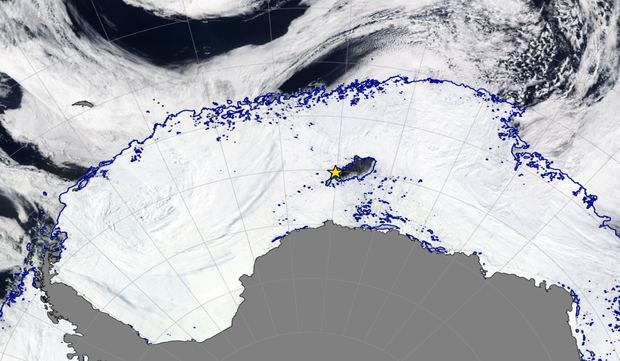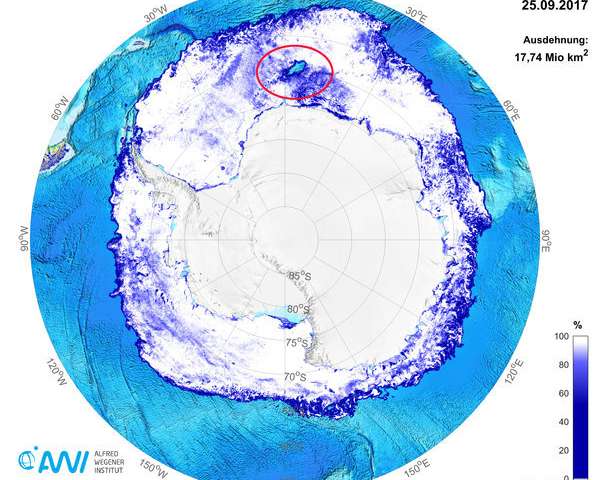Maine-Sized Hole Appears In Antarctica, Disproving Previous Ideas About Climate Change

"It looks like you just punched a hole in the ice"
An interesting story, which might have gone unnoticed by many, was the collapse of a Maine-sized patch of ice (80,000 square kilometers) covering Antarctica's winter sea late last year. This huge hole is known as Weddell polynya. It was discovered by scientists working on the Southern Ocean Carbon and Climate Observations and Modeling project, which was using satellite imaging to monitor a smaller hole that had appeared the year before.

The scientists note that this is the first time they have observed a hole that big since 1974- when an even larger hole three times its size appeared in the same place. The Weddell polynya would reappear every year until 1976 when it disappeared (can a hole disappear?) till recently.
"We don't really understand why it went away for 40 years and has come back now," professor of physics at the University of Toronto Kent Moore told CBS News. "It's like an enigma on many levels."
Polynyas most often occur on the coast, as strong winds blow ice away from an ice sheet.
"These coastal polynyas occur all the time. They're always there," Moore added. "Polynyas that form deep in the ice pack are a lot rarer. It's a different mechanism."
Open-ocean polynyas, including the Weddell one, on the other hand, occur as a result of warmer and saltier water rising from below the ice sheet. It just so happens that there is an undersea mountain located somewhere beneath where this polynya occurred - ocean currents that flow around it could cause warm water to rise to the surface, melting away the ice and creating the polynya.

"This is like opening a pressure relief valve — the ocean then releases a surplus of heat to the atmosphere," said Dr. Mojib Latif, head of the research division at a German marine research facility known as the GEOMAR Helmholtz Centre for Ocean Research Kiel.
"For us this ice-free area is an important new data point which we can use to validate our climate models. Its occurrence after several decades also confirms our previous calculations," noted Dr. Torge Martin, meteorologist and climate modeler in the GEOMAR Research Division.
Although the mechanics of polynya formation in that region is well-understood, it seems scientists remain baffled by why it only appeared after 4 decades.
"If there are hardly any observations, computer models help to simulate the interactions between the ocean, the atmosphere and the sea ice," said Dr. Annika Reintges, first author of the study by GEOMAR, explaining why the real-life occurrence of the polynya provides important data for their climate models.
"We are always trying to compare the simulations with real phenomena to improve the models. Unfortunately, many data series are too short to evaluate the simulated climate variability with periods of several decades. We therefore also compare the models with each other."
American scientists had previously calculated that this polynya would likely not occur again because climate change was suppressing its formation - it seems that they have been proven wrong, with GEOMAR scientists noting that the polynya's formation, in fact, falls in line with their theory that polynyas are a long-term natural variability which would occur again and again over time.
The reappearance of the polynya also confirms that their models are to some extent accurate.
Thanks for the educative write up, @anonnews
That's nothing, you should see all the potholes that opened up here yesterday after the quick thaw we had.
Have they considered that it might be a volcano under there?
thank you for sharing this interesting information, nature is wonderful, makes amazing things happen ... but also affects the land due to climate change.